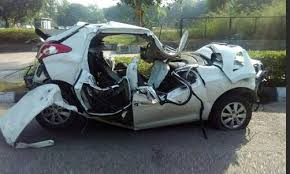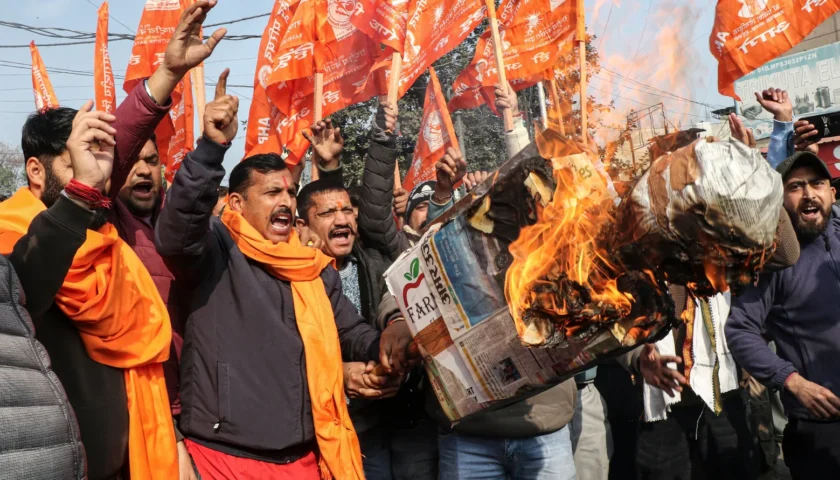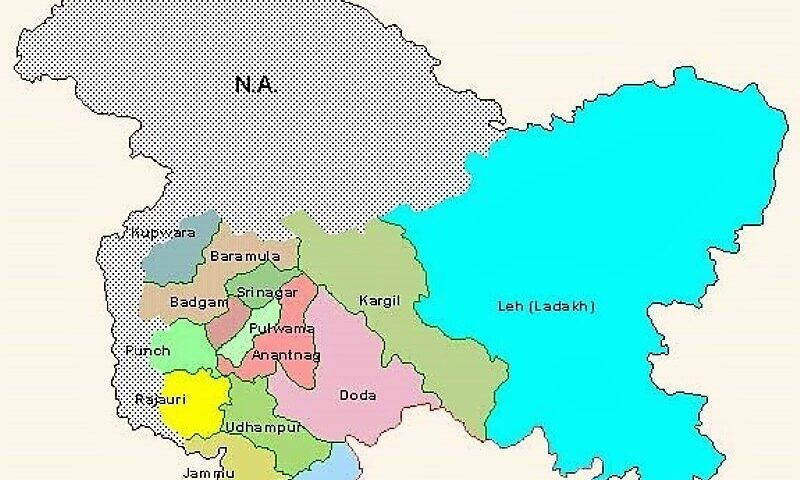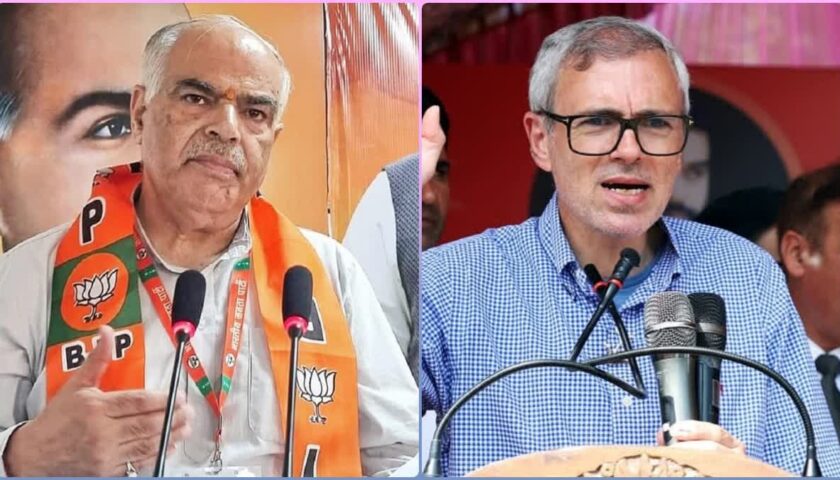Speed, Recklessness, and Lost Futures: Road Safety in J&K Needs Urgent Attention
By: Javid Amin
In the picturesque yet perilous landscape of Jammu & Kashmir, road safety has become a life-and-death matter. Accidents occur daily, claiming lives and leaving families devastated. The combination of speeding, risky driving behaviors, and inadequate infrastructure has turned the region’s roads into deadly traps, with tragic consequences that ripple through entire communities. With staggering statistics and countless personal stories, it’s time to address the issue with the seriousness it deserves.
The Grim Statistics: A Wake-Up Call for J&K
Recent data on road accidents in Jammu & Kashmir paints a troubling picture:
- 2023: 6298 road accidents resulting in 893 deaths and 8469 injuries.
- 2024 (till September): 4457 accidents with 621 deaths and 6122 injuries.
Each statistic is more than just a number; it represents a life lost, a family shattered, or a future permanently altered. These numbers speak of an alarming trend that continues year after year, with no substantial change in sight.
The Jammu division bears a disproportionate share of the toll. Districts like Jammu and Udhampur recorded 1139 accidents in the first nine months of 2024, accounting for 25% of all accidents in the state. This resulted in the deaths of 120 people and injuries to 994 others. In Kashmir division, districts like Srinagar, Anantnag, and Kulgam lead in accident rates and casualties, highlighting that this is an issue across both urban and rural areas in J&K.
The victims of these accidents are overwhelmingly young, with those between the ages of 15-39 representing over 20% of fatalities. For many families, this means the loss of a breadwinner, a future leader, or a beloved sibling. Medical professionals report that accident victims frequently suffer long-term physical impairments that diminish their quality of life and hinder their ability to contribute to society.
Overburdened Hospitals and Medical Challenges
Hospitals in Jammu & Kashmir struggle under the burden of treating a continuous influx of accident victims. A senior professor at GMC Srinagar’s surgical department stated that ICUs and emergency resources are overwhelmed by patients injured in road crashes. “These patients often require extended hospital stays, surgeries, and rehabilitation. Many never regain their previous level of physical function,” he shared.
The professor emphasized the need for specialized accident and emergency departments to cater to the volume and severity of road accident injuries in J&K. Discussion around these needs has been ongoing, but progress has been slow. For doctors, nurses, and other medical staff, managing the aftermath of road accidents has become a regular yet profoundly distressing part of their jobs.
Root Causes of Road Accidents in J&K
1. Overspeeding and Reckless Driving
Speeding is cited as the leading cause of accidents in J&K. The Traffic Police report that many drivers, especially young ones, view driving as a thrilling activity rather than a mode of transportation. This is particularly dangerous on J&K’s winding, hilly roads, which feature narrow lanes and blind curves. SSP Traffic Rural Kashmir, Ravinder Pal Singh, commented, “We have hilly roads, narrow roads, blind curves, and major traffic in lanes and bylanes. Speed limit adherence is missing on highways and elsewhere. Many young ones drive bikes to get a thrill, not for transport.”
2. Lane Indiscipline and Safety Neglect
Many accidents are a result of lane indiscipline and non-compliance with safety protocols like seat belts and helmets. The casual disregard for these essential safety practices reflects a larger cultural problem where road safety is not seen as a personal responsibility.
3. Pedestrian Vulnerability
Pedestrians account for over 50% of fatalities in road accidents in J&K, a number significantly higher than India’s national average of 20%. The lack of safe pedestrian infrastructure – like footpaths and designated crossings – leaves pedestrians vulnerable. SSP Traffic Srinagar, Muzaffar Ahmad Shah, emphasized, “Inadequate pedestrian infrastructure forces people to walk on busy roads. We need to examine whether road design and intersections are contributing to this issue.”
The Impact on Youth and the Community
The high rate of accidents among youth, particularly those between ages 15-39, has long-term consequences for J&K’s future. These young people represent not only potential future leaders, workers, and parents but also the region’s social and economic backbone. Medical practitioners have expressed concern about the toll these accidents take on young people’s productivity and health, especially as many injuries lead to permanent disabilities.
Moreover, the psychological impact on communities is profound. Families are left grieving lost loved ones, and communities must grapple with the sense of vulnerability that comes with each accident. The financial toll on families, often already struggling with limited resources, can be devastating when medical bills and funeral expenses are considered.
Road Infrastructure and Traffic Management Challenges
Road infrastructure in J&K has failed to keep pace with the rapidly increasing number of vehicles. According to SSP Traffic Srinagar, Muzaffar Ahmad Shah, the vehicular load in Srinagar has multiplied over the years, with lakhs of vehicles now crowding roads that were never designed to handle such traffic volume. The resulting congestion, combined with inadequate traffic control measures, contributes to an increased risk of accidents.
In addition to the sheer volume of traffic, the unique topography of J&K presents its own set of challenges. Roads are often narrow, winding, and lack adequate signage, particularly in rural areas. The region’s weather patterns – including fog, rain, and snow – further complicate driving conditions. These factors make it imperative that drivers adhere to speed limits and follow road safety guidelines.
The Role of Law Enforcement: Awareness and Accountability
The Traffic Police in J&K are actively working to curb accident rates through regular enforcement and awareness campaigns. However, enforcing traffic laws in a region with limited resources and complex terrain remains challenging. SSP Traffic Srinagar emphasized the need for a combined approach that includes both enforcement and education. “Fines alone won’t solve the problem. We need to change habits and driving behavior,” he stated.
To effectively address the problem, law enforcement must increase its presence on high-risk roads and conduct regular safety checks. Awareness programs focusing on speed limits, seat belts, and helmet use are essential. Law enforcement officials must also collaborate with schools and universities to engage young people, emphasizing the importance of safe driving behaviors from a young age.
Steps Toward a Safer Future: Solutions and Strategies
1. Investing in Infrastructure Road infrastructure in J&K needs an urgent overhaul to improve safety. The government should prioritize projects that enhance road width, install guard rails, add signage, and create pedestrian pathways. Additional measures like lighting, traffic signals, and dedicated lanes for different types of vehicles would also contribute to safer roads.
2. Enhanced Traffic Law Enforcement Law enforcement must be empowered with resources and technology to monitor road safety more effectively. Utilizing surveillance cameras, radar guns, and automated traffic systems can help ensure that speed limits and other regulations are enforced consistently.
3. Education and Awareness Programs Educational institutions can play a significant role in road safety by incorporating driving safety courses and awareness workshops into their curricula. Community-driven awareness programs should also be promoted, with a focus on educating people about the dangers of reckless driving, the importance of wearing helmets and seatbelts, and respecting speed limits.
4. Responsible Parental Guidance Parents must discourage underage driving and emphasize the importance of road safety. They should educate their children about the dangers of reckless driving and set an example by following road safety practices themselves.
5. Incentives for Safe Driving Incentivizing safe driving behaviors could motivate drivers to follow road safety protocols. The government could introduce reward schemes for drivers with good records or offer insurance discounts to those who adhere to road safety guidelines.
6. Improving Emergency Response To handle road accident cases efficiently, hospitals should establish dedicated accident and emergency departments. The response time to accident sites should also be improved, with specialized first-response teams on standby in accident-prone areas.
Bottom-Line: A Call to Action for a Safer J&K
The rising toll of road accidents in J&K is a crisis that requires immediate and collective action. Every life lost or altered due to a road accident is a tragedy that could have been prevented. As a society, we must foster a culture of road safety, recognizing that each person’s actions contribute to the safety of everyone on the road.
By committing to responsible driving, supporting infrastructure improvements, and demanding stronger enforcement, we can create a safer environment for all. It’s time to take action, not just for ourselves, but for the future of J&K’s youth and the generations to come.




